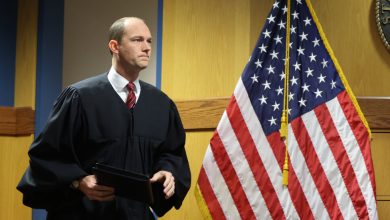Wildfire in Big Sur Forces Residents to Evacuate

Over 500 residents in the Big Sur area in California were told to evacuate Friday night as a brush fire spread through the mountainous coastal region known for its winding turns and dramatic cliffs.
The fire was “stubbornly active overnight,” according to the National Weather Service, as intense, gusty winds of up to 50 miles per hour blew the flames erratically along the area’s steep canyons. By Saturday morning, the fire — known as the Colorado fire — grew to 1,500 acres after starting a little after 5 p.m. on Friday in the Palo Colorado Canyon area. Just one structure had burned by Saturday. The cause of the fire, which on Saturday afternoon was 5 percent contained, is under investigation.
The blaze swept through an area with little or no fire history, according to the National Weather Service. “Pictures on social media suggest some pretty surreal fire behavior given the wet Oct and Dec that was observed across the region,” the National Weather Service said on Twitter.
“Anecdotally it seems as though the long-term drought is acting like a chronic illness where even recent rains” and cold winter weather “isn’t helping to keep fires from developing,” the National Weather Service said.
Though California fires typically peak in the summer, major blazes have occurred in December and January in recent years.
“Everybody says that California has a year-round fire season,” said George Nuñez, a captain with Cal Fire, the state’s fire agency. “And this is just part of it.”
On Friday night, the Monterey County Sheriff’s Office issued an evacuation order to more than 500 people in a coastal stretch south of the small beach town of Carmel-by-the-Sea. A section of Route 1 was closed as the fire raged along the famed coastal highway, obscuring the road’s dramatic bridges in smoke.
Videos posted on social media showed a red glow that was visible more than 60 miles away in Santa Cruz. Shifting winds were expected to push smoke north toward the Monterey Peninsula and the city of Salinas on Saturday, according to the National Weather Service.
Mr. Nuñez said 120 firefighters were on the scene Friday night and Saturday. But the intense wind conditions and steep terrain made it difficult for crews to contain the fire. The fog that usually rolls onto the coast in the evening was abnormally light, he said.
“Usually you get that overnight recovery and things slow down, but last night we didn’t get that,” Mr. Nuñez said.
Decreased staffing during what was expected to be the off-season has made containing the fire more challenging.
During peak fire season, Mr. Nuñez’s unit has 17 fully staffed fire engines, he said. But when the official fire season ended on Jan. 3, that number was reduced to two. More than 100 seasonal firefighters were laid off for a period of three months.
“The funding’s only available for a certain period of time, and we can’t run the seasonal program longer,” Mr. Nuñez said.
But with the extended drought, that funding calendar no longer matches up with the reality of fire season on the ground.
“Some of the units that close for fire season used to end up with snow for an extended period of time, and that’s not happening anymore,” Mr. Nuñez said.
With limited resources, Mr. Nuñez’s unit has sought additional personnel and equipment from other fire agencies as part of a resource sharing plan called “mutual aid.”
With mellower winds Saturday, Mr. Nuñez said he was hopeful that crews would be able to get the fire under control. But the area is not expecting rain until the end of February, so the conditions will remain ripe for fire, he said.





